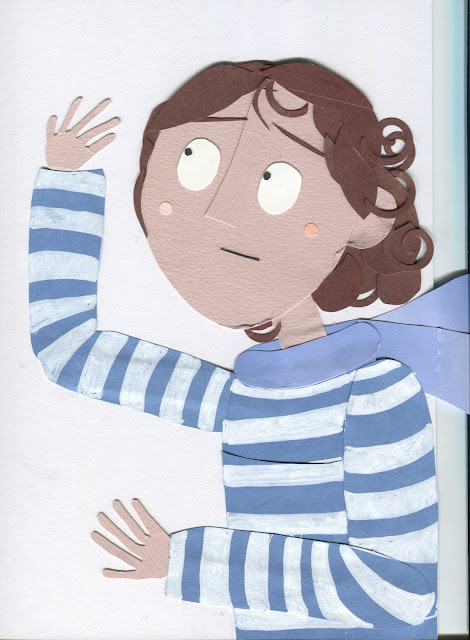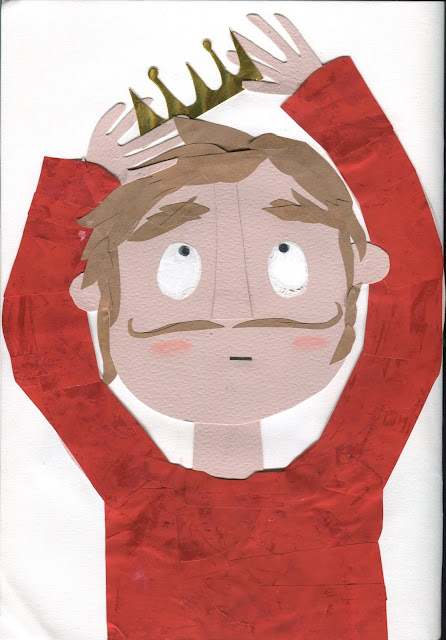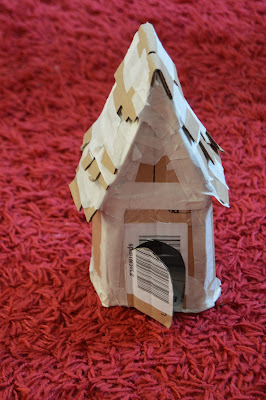Although fuzzy felt was a great way to construct images and re-arrange features easily, I wanted to move back to paper because of the colours and textures that I can achieve with this.
Felt is always a block colour, and I was restricted to only one specific shade.
All of the felt was the same thickness, whereas I can alternate card and paper stock to describe the heights of troughs and peaks in a face (nose peaks, neck troughs).
Starting by looking at shape and not focussing on the outfits as much. I want to learn how to use shape before I tackle the relevance of the outfits I choose.
Developing characters and personalities through shapes.
The way that the eyes open, the posture of the body all suggest things about the portrait and create character. I often rely on lines and I am impressed that the same result can be obtained just using shapes.
Starting to integrate outfits but I don't know much about them! How do they move? How do they fit?
The above portrait describes how clothes and hair move in the wind, in response to observation
(this week has been way too windy-gross).
I'm just choosing subjects at random! Should I stick to a theme? Should all of the three portraits connect? I need to carry out more research into kings to produce an accurate and interesting outfit.
I picked a king because it's a recognisable outfit, a costume and an occupation. Should I use the same character and show it trying on different costumes?
Dressing up?
Using paper cutting tools and hole punches to create standardised shapes.
I have a spiral cutter which helped me to produce lots of curls for hair.
Is this cheating? I really like the consistency of this and the simplicity of cutting pre-made shapes. The creative freedom is how they are used and what paper they are cut from.
Holographic card crown looks really shiny and resembles the material of the actual 3-dimensional object.
Can I use paper to mimic the folds and creases of fabric? Does it need more depth and layers?
I don't like this image. I wanted her to be a dancer.
I was lazy and didn't even look at dancers and their costumes. Don't try and cut corners because it just wastes time. I'm now going to have to revisit this image and reproduce it.
I'm disappointed in the way I have conducted this task because although I've put a lot of time into making images, I've done this half-heartedly and I've not invested my mind into the concept.

Find something that excites you! Feed this into your work. It will transform these vacant, empty images into informed and interesting illustrations.
Next Step: RESEARCH OUTFITS



















































